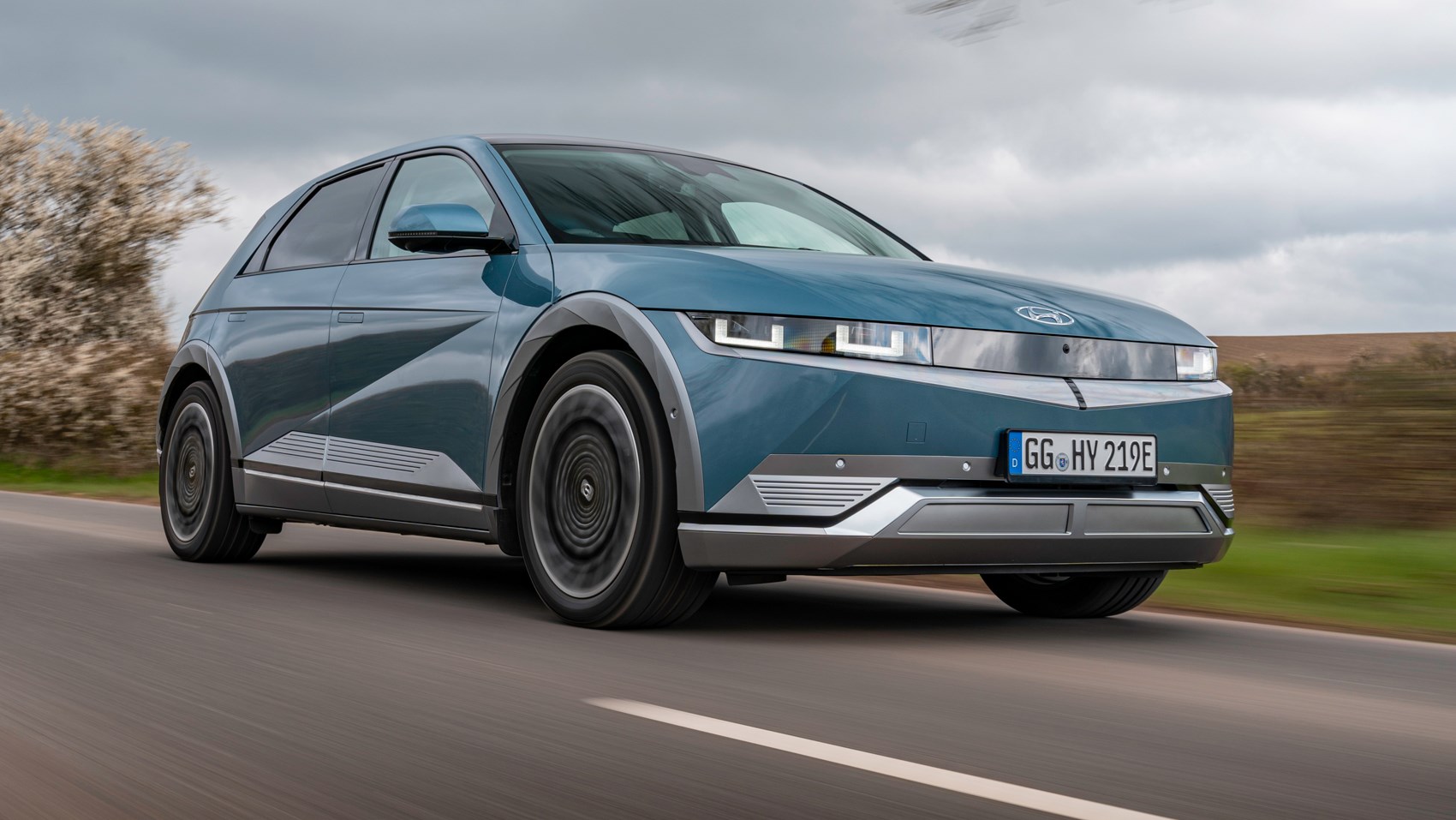
Things we like
- Impressive power and handling
- Very, very spacious cabin and storage areas
- Great build quality and materials
Not so much
- Example we tested would be priced around $85,000
- ...but frankly, this is a winner so far
As the Australian debut of Hyundai’s IONIQ 5 electric crossover draws closer, we’ve so far had the opportunity to experience a pre-production example for what we call a ‘walkaround’ review.
Our friends in Europe, however, have now driven the new Tardis-like family car, which boasts exterior dimensions similar to the mid-sized Tucson SUV but a wheelbase even longer than the big new Hyundai Palisade.
First impressions are very encouraging, with impressive performance, handling and comfort married to a convincing driving range – and, of course, the ‘feel-good factor’ of EV ownership.
So, until we get our first drive on Australian roads, we invite you to read our overseas review, filed by Jakes Groves for our friends at Car Magazine in the UK.
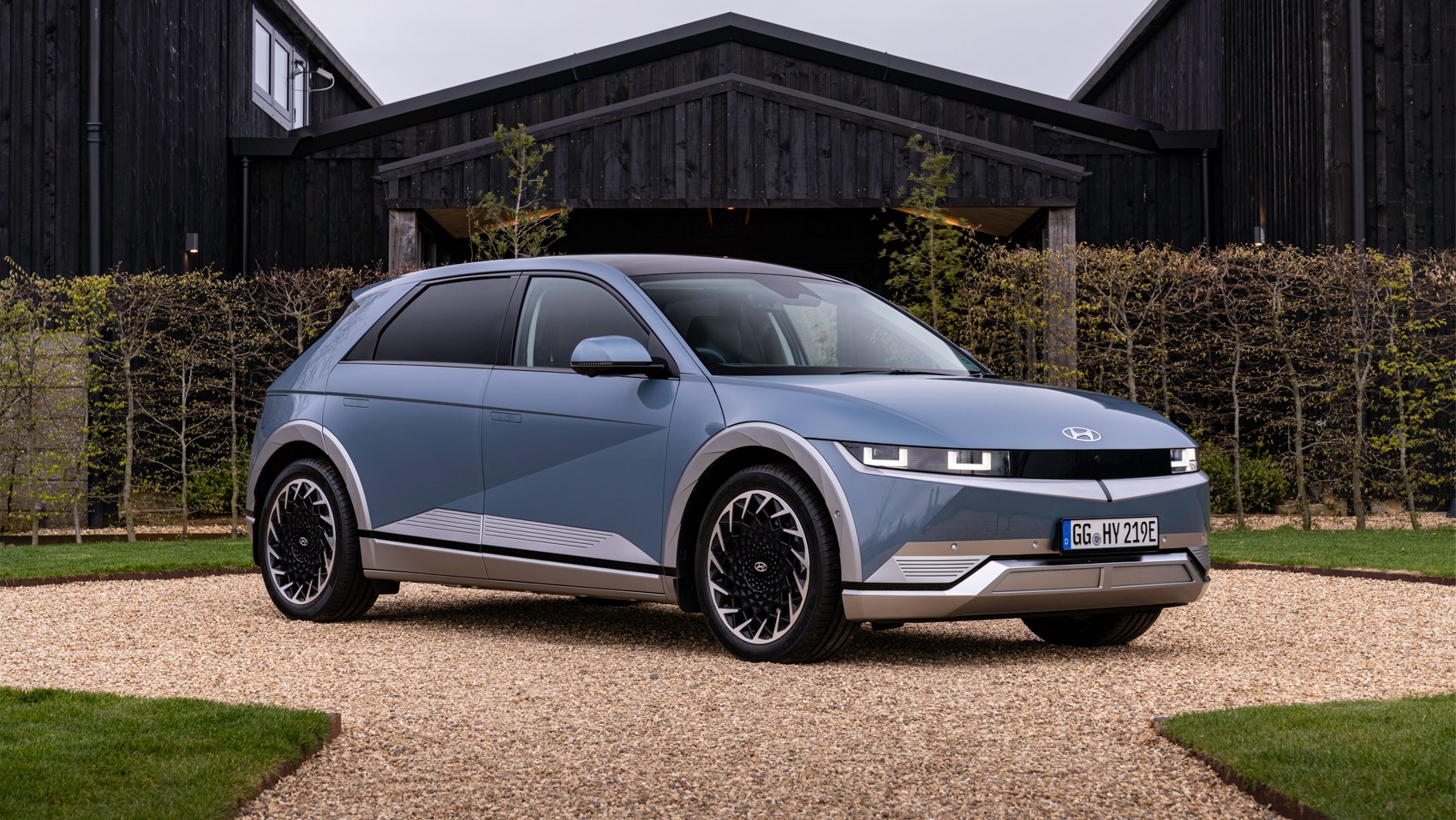
It’s clear that Hyundai’s mantra must be ‘speak softly and carry a big stick.’ It just must be.
Being among quiet pioneers of family-friendly electric cars already with the original IONIQ and Kona, the brand is about to smack us across the chops with a whole new range of EVs under the IONIQ sub-brand, starting with this: the IONIQ 5.
We’ve driven a near-finished prototype for our first whack. Has Hyundai beaten VW at its new game?
Firstly, it looks cool – not always a sure thing with EVs
Hyundai says the look has been inspired by the Pony Coupe of the ‘70s but, unlike so many car brands looking to its past to guide its future, design-wise, this is no slavish pastiche. It’s an eye-popping piece of design, shaped as a family hatch, with pixelated lighting front and rear and super-crisp lines.
Interestingly, though, the IONIQ 5’s dimensions are much larger than you think. This design masterstroke actually hides the car’s size: it’s actually longer than a VW ID.4 both physically and in terms of its wheelbase, and about 40mm taller than a Jaguar i-Pace.
Speaking of the i-Pace and ID range, we conveniently managed to park next to Jag’s EV and an ID.3 – both look a little dated when compared to this. (The Jag is arguably timeless… – Ed.)
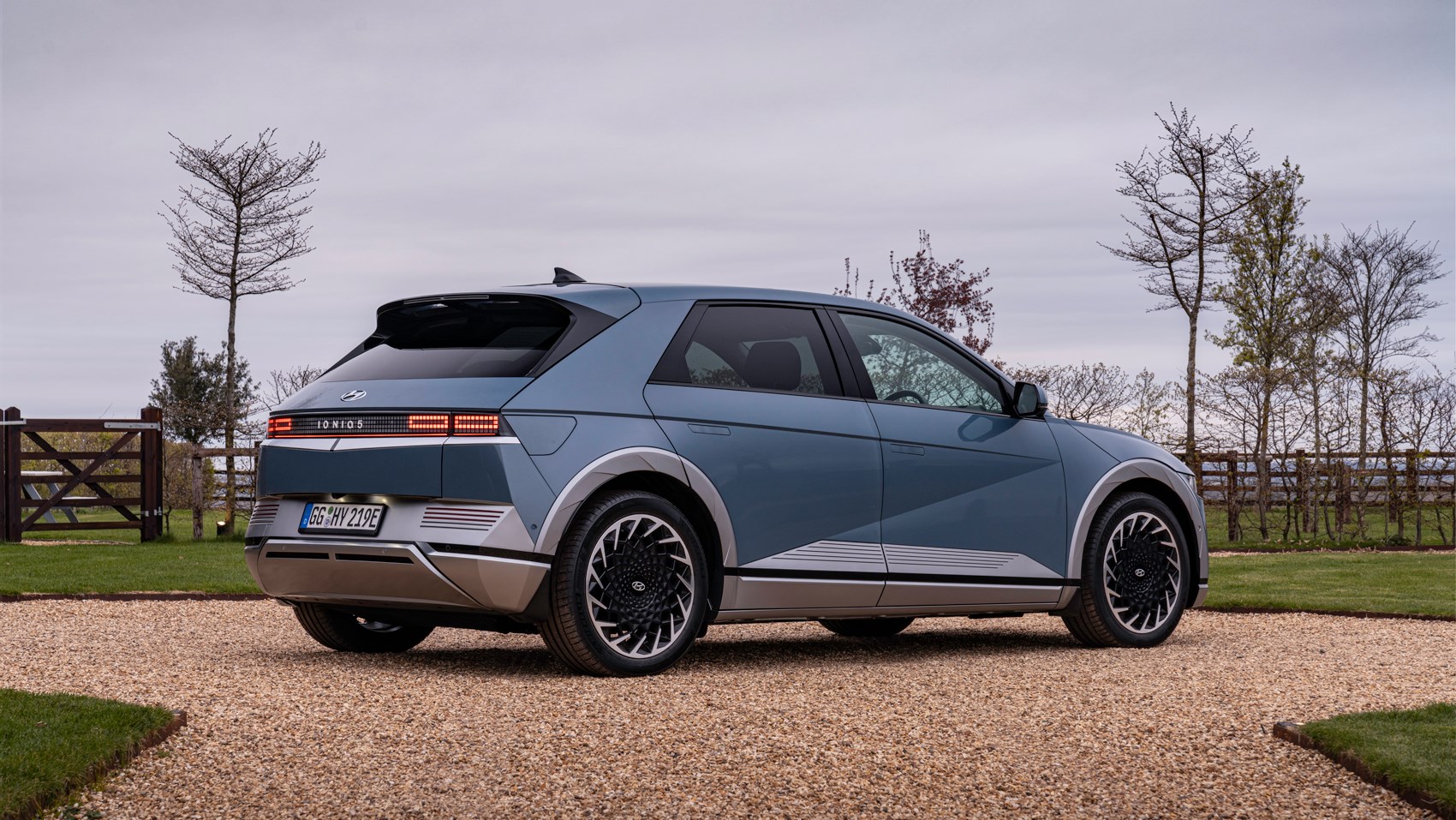
Inside, the cockpit takes full advantage of the e-GMP platform that lies underneath. A flat floor means no fixed centre tunnel, with a movable centre console that provides cupholders, cubbies and a wireless phone charger.
You’re also greeted by thick padded seats, two massive screens and a kitsch two-spoke wheel like a Honda E. And, unlike Honda’s little city EV, we’ll at least get the IONIQ 5 in Australia. Full points to Hyundai for that one.
But Hyundai hasn’t gone tech-overload here like Mercedes, or ultra-minimalist like a Tesla Model 3 – there’s a balance between large, useful screens, touch panels and physical switchgear and solid materials on all your regular touch points.
The shift stalk, for example, is on the steering column, with a chunky twist action. And the door inlays – complete with eco-friendly paper inserts – all feel solid with a tactile thunk when you pull the door handles.
Space is impressive, too. The cabin itself feels huge once you’re inside, with loads of room for rear passengers, too. The rear bench can slide forward and back and, even with a 6ft-2in driver like myself at the wheel, there’s tonnes of legroom.
The boot, however, is rather shallow, but has depth end-to-end, and properly usable width. You don’t even need to store your cables here – there’s a handy storage box under the bonnet for that.
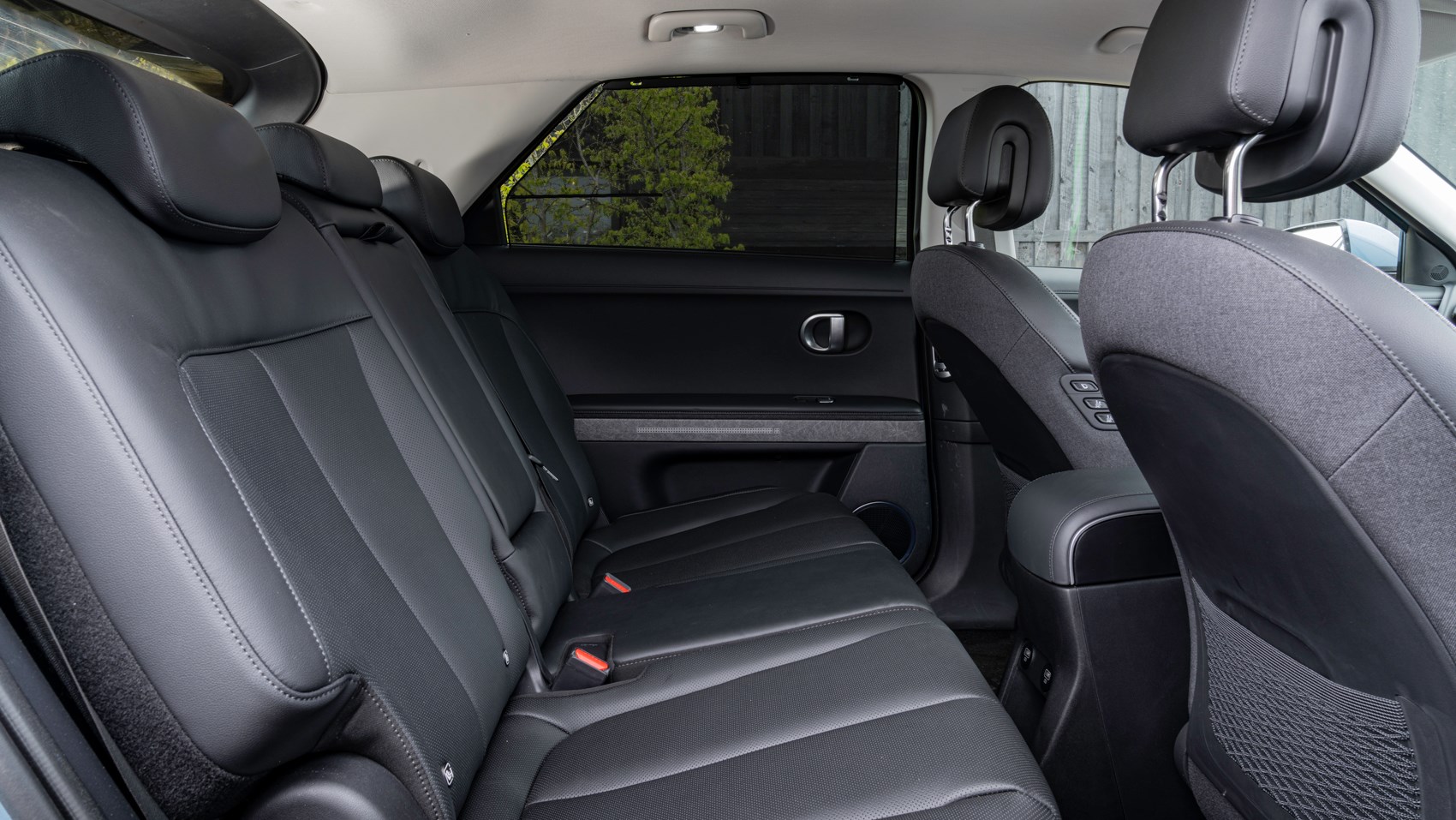
Technology
The new e-GMP platform used here will underpin every new IONIQ sub-brand model from Hyundai, along with Kia’s new EV range starting with the EV6.
Rear- and all-wheel drive powertrains are offered, with the IONIQ 5 giving you the choice of a standard range 58kWh or long-range 72.6kWh battery packs.
And, along with a three-pin plug socket in the car, there’s ‘vehicle to load’ – the ability to use the car as a rolling power bank, allowing you to plug in (via an adaptor on the charging port plug) almost anything externally, like a lawn mower, e-scooter, or even another EV.
“Our car was fully trimmed with every frippery you could ask for, implying that it was one of the limited-run ‘Project 45’ versions, at £48k (AU$85,600).”
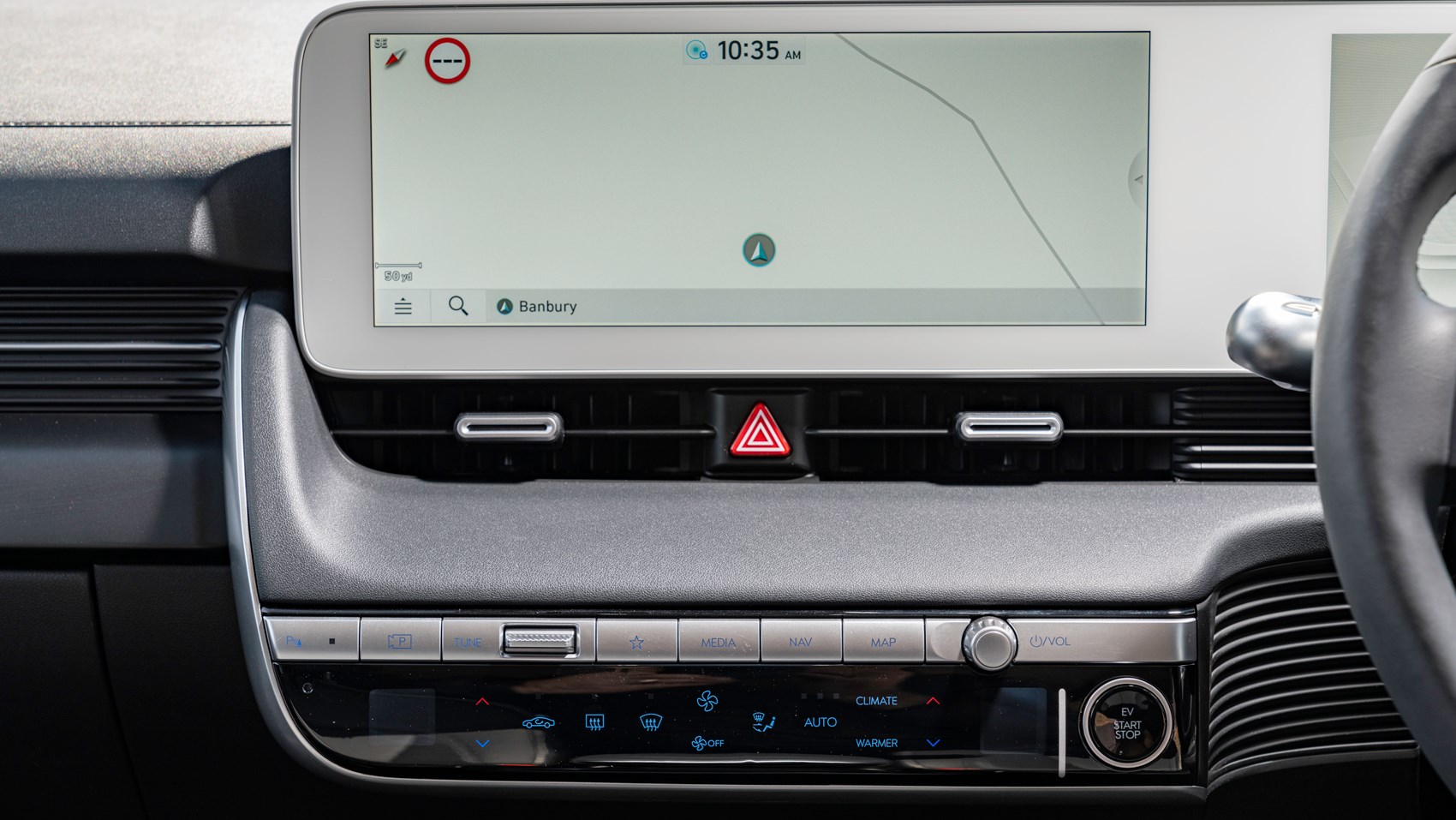
Hyundai’s electric car plans explained
It’s also as clever as a Taycan, allowing for both 400 or 800-volt charging, meaning (on the fastest available 350kW chargers, of course) the ability to zap from 10 to 80 per cent charge in just 18 minutes.
Hyundai claims 296 miles (476km) in the IONIq’s thriftiest setting (larger battery, rear-wheel drive), but you can expect an ID.3 rivalling 260-plus (418km) from the all-wheel drive variant.
Live in a sunny area? That’s handy, because you can also spec a solar cell roof (after the IONIQ’s initial launch) that aids the batteries.
“The solar roof has a charging capacity of 205W, and in an environment that is sunny we did some experiments and found that it could add 1200 miles (1931km) of range per year, or about three miles (5km) per day,” IONIQ 5 project manager, Askin Kahraman, told us.
“The roof will also help the 12V battery so the car doesn’t discharge completely.”
Then there’s all the available tech on board. Along with Level 2.5 semi-autonomous driving tech, you can have Hyundai’s Blind Spot View Monitor (that shows you the view of the door mirror camera when you flick the indicator), an augmented-reality head-up display and front seats that recline with leg supports like a living room La-Z-Boy.
Our car was fully trimmed with every frippery you could ask for, implying that it was one of the limited-run ‘Project 45’ versions, at £48k (AU$85,600).
On top of all the tech that gives you, it also means your IONIQ 5 comes with the bigger 72.6kWh battery and all-wheel drive.
As for lower trims, we expect it to follow the same trim structure as Hyundai’s other models: SE Connect, Premium and Ultimate, with the cheapest models circling the £39,000 (AU$69,500) mark.
(Note: the above trim grades are specific to the UK, and it is unknown how many variants of the IONIQ 5 will be offered in Australia.)
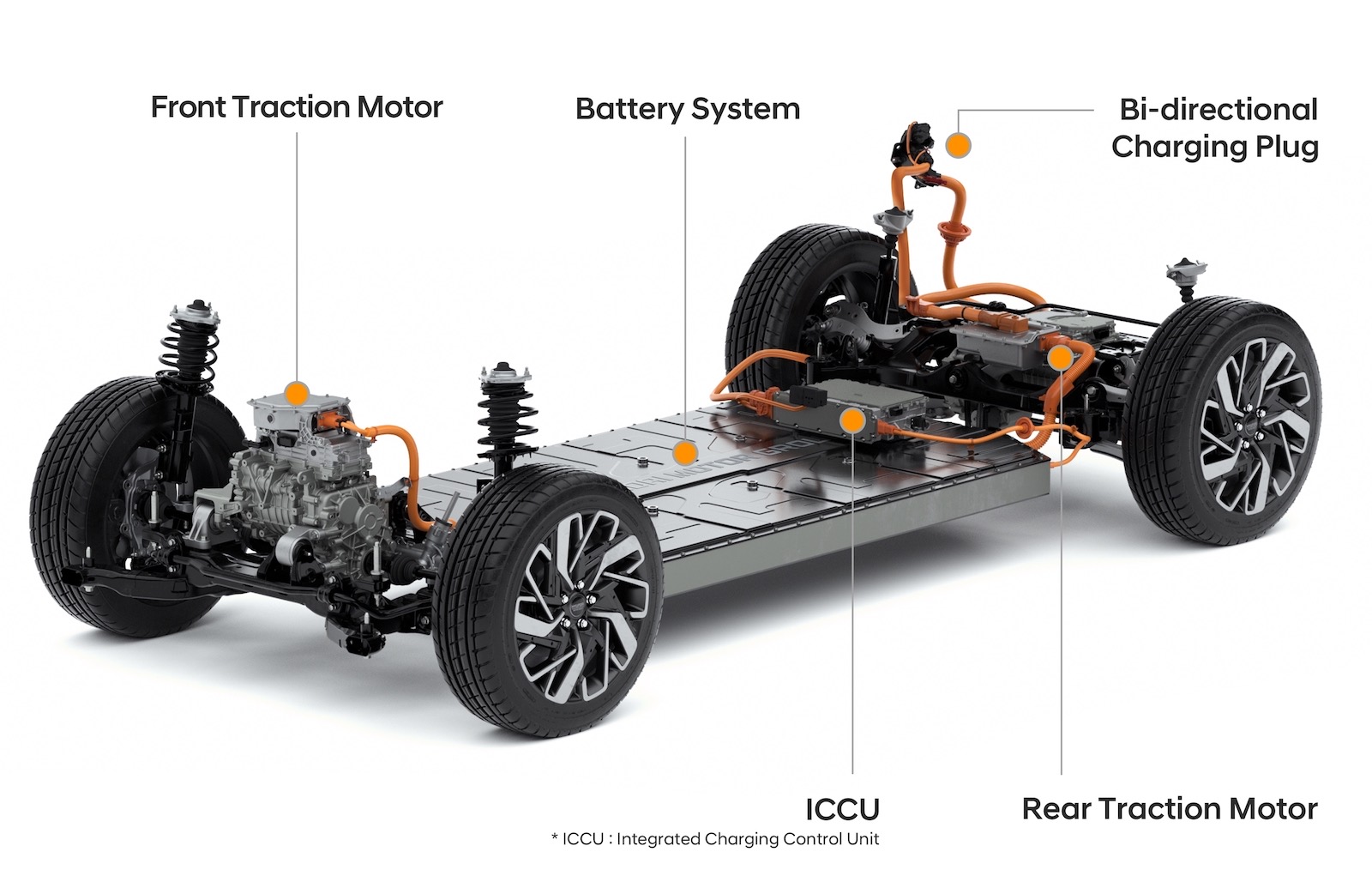
Let’s drive
Walk on up to it and flush door handles pop out, ready for the drive ahead. Given the front seat’s reclining nature, the whole seat angles backward if you want thigh support – rather than just the front end of the base – and the wheel adjusts for plentiful reach and rake.
Once you’re rolling, the 5’s interesting details don’t instantly reveal themselves – it feels entirely standard fare for a family EV – quiet, inoffensive and smooth when you’re nipping around town.
And properly quick, just like an EV with so much torque should be; Eco mode dulls the throttle, while, at the other end of the drive mode scale, the dials glare red in Sport and the throttle response is incredible. (In its quickest form, the 72.6kWh all-wheel-drive model, Hyundai claims a 0-100km/h time of 5.2 seconds.)
And this simply won’t be the most powerful version of the E-GMP platform, either. Kia, for example, has already shown off a supercar-baiting EV6 GT, so it’s not beyond the realms of possibility that Hyundai could make an IONIQ N.
Then you start to notice the finer points after the miles roll on.
The steering, for example, is live-wire alert and well-weighted – no dead-spots off-centre and tremendously fluid when you wind the lock off after a turn. The turning circle is tight, too; not London Taxi or Honda E tight, but not far off.
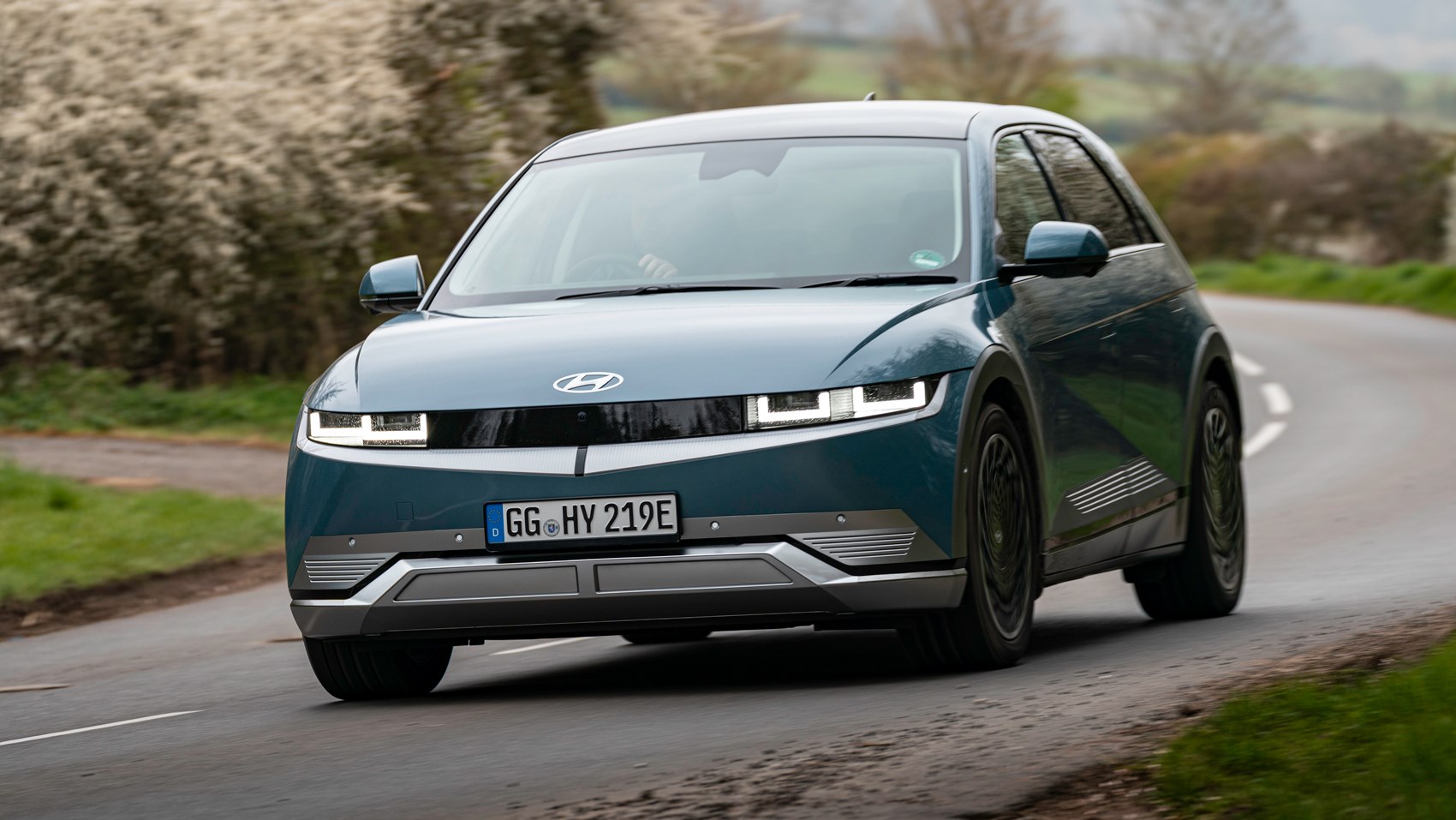
Then there’s the brakes.
It’s almost an expectation for an electric car to have a soggy brake pedal and inconsistent feel when you apply some pressure due to regenerative braking (of which Hyundai has four steps, plus a one-pedal mode), but not here. Plenty of solid, accurate feel regardless of regeneration level.
You can really have fun with this car on a back road – something not often said this side of a Taycan.
Adding up the whumping torque, sharp steering and feelsome brakes is already plenty good enough, but there’s real balance to the chassis, too. This doesn’t feel leaden or recalcitrant when you want some zippy thrills going the fun way home.
Yes, there’s a touch of body roll, but the way the suspension handles the IONIQ’s weight is really something to be commended – it’s a hoot.
We even got some time on the motorway. Hyundai told us that not all of the production-spec soundproofing is on this prototype but, if that’s the case, I’ve driven plenty of in-production family cars (including those of premium manufacturers like Audi) riding on 20-inch wheels that have worse NVH (noise, vibration and harshness) refinement.
Tyre noise is well within an acceptable level, and wind noise is minor. Couple this with balanced ride quality – not too jittery, but not water-bed wallowy either – and it’s a very promising position to be in.
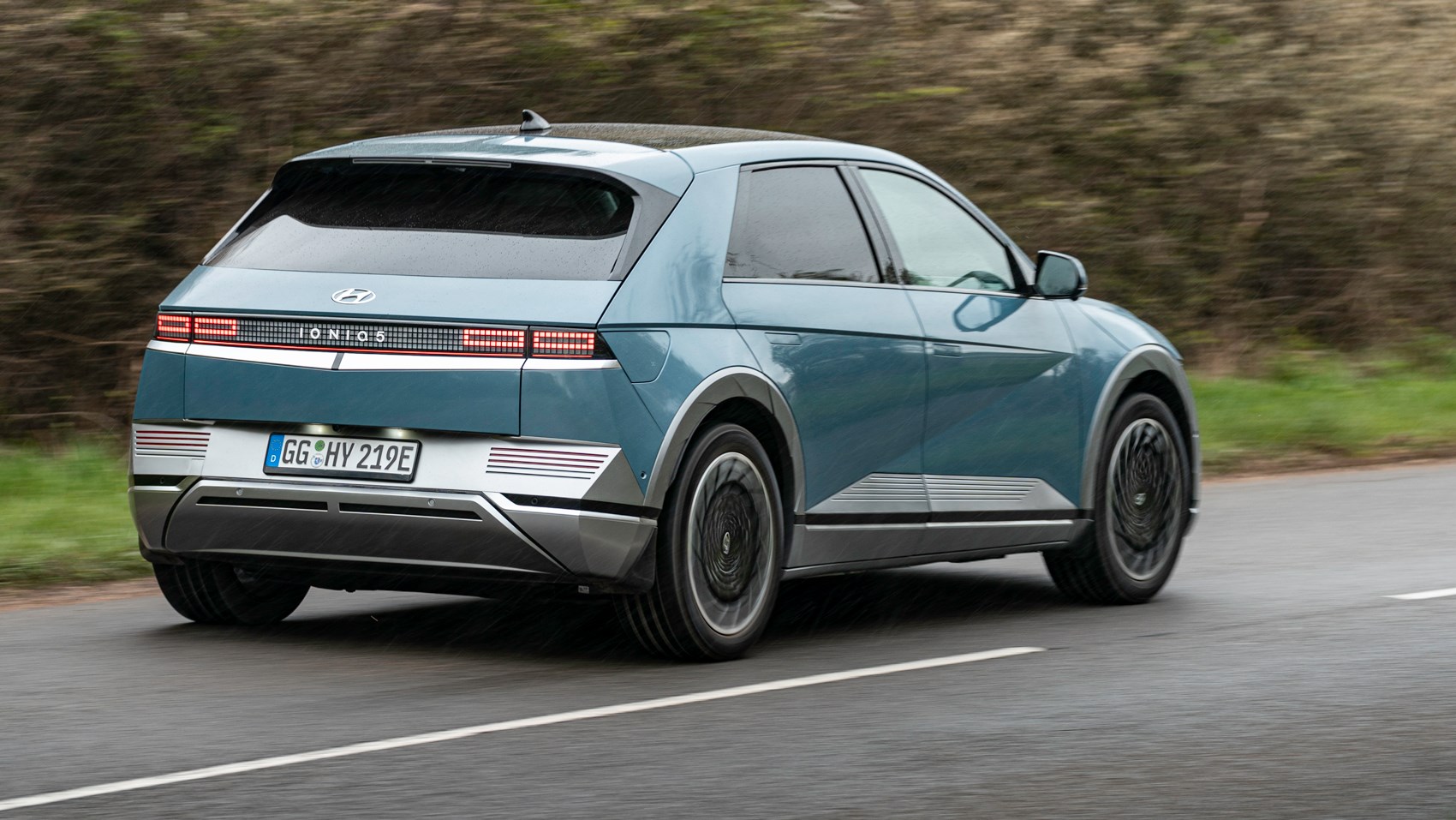
First impressions: Hyundai IONIQ 5
What an impressive machine. We can’t wait to try a production-spec one but, even in this prototype, the IONIQ 5 brings such a breadth of capabilities that other EVs can only dream of.
Show-stopping looks, a thoroughly usable and appealing interior, and sharp dynamics that are rare to find in a heavy family EV.
This article was first published at Carmagazine.co.uk
Things we like
- Impressive power and handling
- Very, very spacious cabin and storage areas
- Great build quality and materials
Not so much
- Example we tested would be priced around $85,000
- ...but frankly, this is a winner so far
We recommend
-
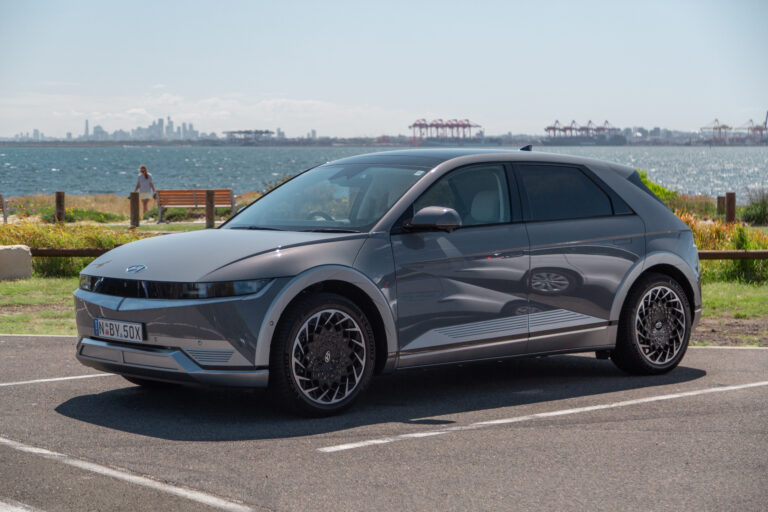 News
News2022 Hyundai Ioniq 5: Everything we know about Hyundai's flagship EV
If the impressive Kona Electric is too small and the bigger Ioniq Electric is too dull, Hyundai's got a sharp new deal for you
-
 Reviews
Reviews2019 Hyundai IONIQ Electric review
The Hyundai IONIQ Electric completes a three-pronged electrified range of affordable eco cars
-
 News
NewsHyundai forges EV-only Ioniq family
Dedicated Ioniq brand to deliver three new all-electric cars to the Hyundai fold inside four years



